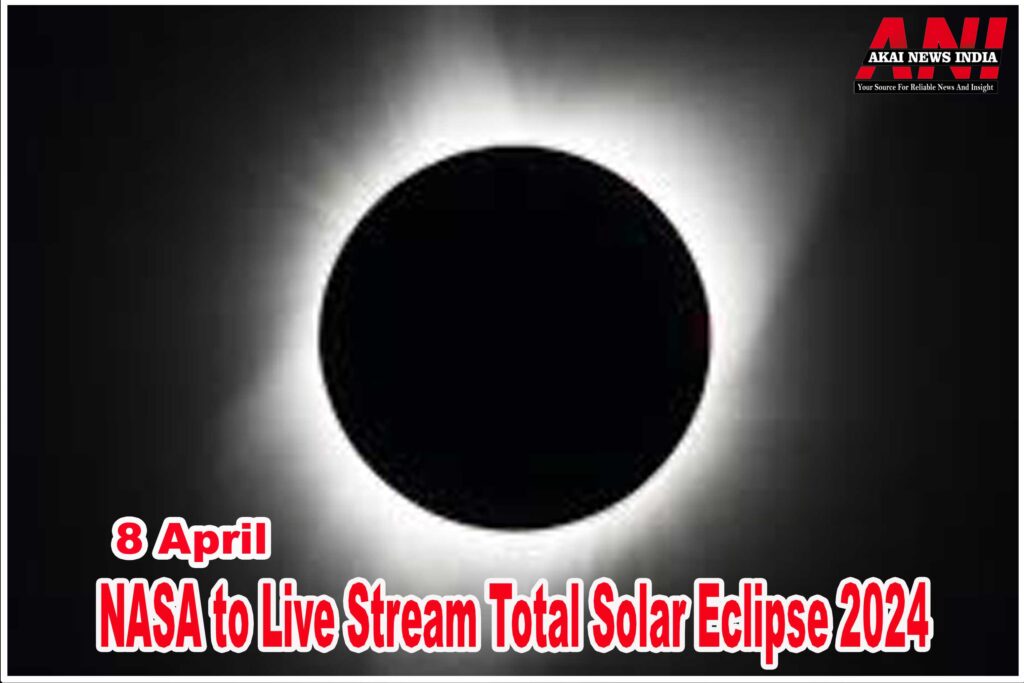NASA to Live Stream Total Solar Eclipse 2024, Bringing the Spectacle to Global Audiences

The upcoming total solar eclipse on April 8, 2024, marks the first solar eclipse of the year and is anticipated to be a spectacular sight for observers in North America, the Pacific, the Atlantic, the Arctic, western Europe, and northern South America. However, this celestial phenomenon will not be visible in India.
The eclipse is scheduled to begin at approximately 9:12 pm IST on April 8 and conclude around 2:22 am IST on April 9, according to timeanddate.com. During this time, the Moon will pass between the Earth and the Sun, casting its darkest shadow, known as the umbra, on the planet, resulting in a total solar eclipse.
Observers within the path of totality will witness the Sun’s outer atmosphere, the corona, becoming visible. It is crucial to note that staring directly at the Sun during the total eclipse phase can cause severe eye damage. Specialized eye protection, such as eclipse glasses or telescopes with solar filters, is recommended for safe viewing.
For those in India unable to view the eclipse in person due to the event occurring at night, NASA will provide a live stream of the total solar eclipse on its official YouTube channel and social media platforms.
The eclipse will progress through five stages: the beginning of the partial solar eclipse (first contact), the beginning of the total solar eclipse (second contact), totality and maximum eclipse, the end of the total eclipse (third contact), and the end of the partial eclipse (fourth contact).
During the second contact phase, the Moon will gradually cover the entire disk of the Sun, leading to the diamond ring effect in some regions within the umbra’s path. The totality and maximum stage will see the Moon completely obscuring the Sun’s disk, revealing only the corona and causing darkness to fall.
As the Moon moves away from the Sun during the third contact phase, the Sun will gradually reappear, marking the end of the total eclipse. The eclipse will conclude with the Moon no longer visible on the Sun’s disk during the fourth contact phase, signaling the end of the partial eclipse.





